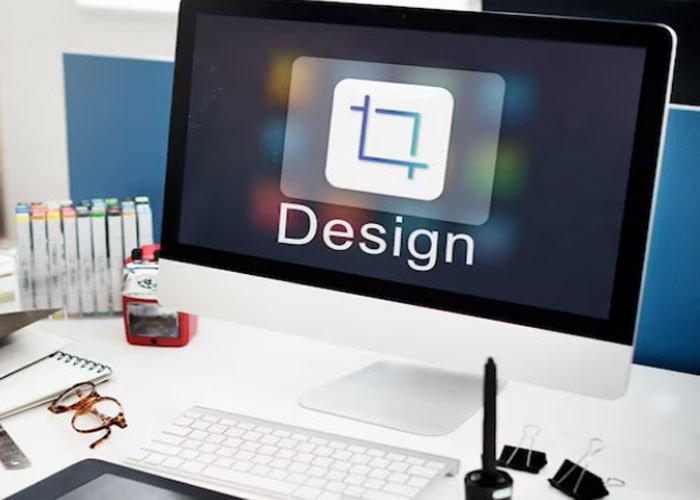
The Essential Functions and Responsibilities of a Web Designer
Understanding Web Designer Responsibilities
Web designers are responsible for creating the look, layout, and features of a website. This involves understanding both graphic design and computer programming. Once a website is created, a designer helps with maintenance and additions to the website. They work with development teams or managers for keeping the site up-to-date and prioritizing needs, among other tasks.
The Role of a Web Designer: Definition and Career Path
The role of a web designer is multifaceted, encompassing aesthetics, functionality, and user experience. Their career path can vary, ranging from freelance work to full-time positions in agencies or large corporations. As technology evolves, so do the opportunities in this field, often leading to specializations in areas like mobile design, user experience (UX) design, or even virtual reality (VR).
Comparing Web Developers and Designers: A Closer Look
While often confused, the roles of web developers and designers are distinct. Web designers focus on the visual aspects and usability of a website, employing tools like Photoshop and Illustrator alongside coding skills in HTML and CSS. Web developers, on the other hand, are more involved with building and maintaining the core structure of a website, often using languages like JavaScript, Python, or Ruby.
Exploring the Day-to-Day Tasks of a Web Designer
The daily tasks of a web designer can vary widely but generally include creating wireframes and mockups, choosing color schemes and fonts, optimizing images and graphics, and updating websites. Collaboration with clients, marketing teams, and developers is also a significant part of the job, requiring strong communication skills.

Future Prospects for Web Design Professionals
The field of web design is continually evolving, with new tools, technologies, and design trends emerging regularly. This constant evolution offers exciting future prospects for professionals in the field, with opportunities to specialize in areas like mobile design, e-commerce, and user interface design.
An Overview of Web Designer Compensation
Compensation for web designers varies based on experience, location, and the specific industry they work in. Entry-level designers might start with a modest salary, but there is significant potential for growth. Senior designers and those with specialized skills in high-demand areas can command higher salaries.
Essential Skills for Aspiring Website Designers
Aspiring web designers should focus on developing a mix of technical and creative skills. Proficiency in design software, understanding of coding languages, and an eye for aesthetics are fundamental. Additionally, soft skills like problem-solving, communication, and adaptability are crucial for success in this field.
Key Competencies for Web Designers in the Workplace
In the workplace, web designers need to exhibit various competencies including strong attention to detail, ability to work under tight deadlines, proficiency in design and editing software, and a good understanding of user experience principles. Collaboration skills are also essential, as designers often work in teams and need to communicate effectively with clients and colleagues.
Importance of Effective Communication in Web Design
Effective communication is vital in web design. Designers must be able to clearly articulate their ideas and concepts to clients and team members, as well as understand and interpret the needs and visions of clients. Good communication ensures that the final product meets the client’s expectations and is delivered efficiently.
Mastering Time Management in Web Design
Effective Strategies for Efficient Web Design Workflow
This section discusses the crucial role of time management in the web design process. It explores various strategies like task prioritization and deadline management, and how the effective use of project management tools can streamline the design process, making it more efficient and productive.
Balancing Creativity with Productivity
Balancing creativity and productivity is essential in web design. This part delves into maintaining a creative flow while adhering to time constraints. It addresses the challenges designers face in staying innovative and productive within limited timelines, and offers insights into managing this delicate balance effectively.
The Role of Teamwork in Website Design
Collaborative Approaches in Web Design Projects
Teamwork is vital in web design, and this section emphasizes the importance of collaboration among designers, developers, and clients. It discusses the dynamics of team-based projects and how effective communication and role distribution can lead to more successful outcomes.
Overcoming Challenges in Team-Based Web Design
This subsection tackles the common challenges faced in collaborative web design, such as communication barriers and maintaining a unified vision. It offers practical solutions and strategies to overcome these challenges and achieve cohesive teamwork in web design projects.

Fundamental Technical Abilities for Web Designers
Core Skills Every Web Designer Should Master
This section details the essential technical skills and knowledge every web designer should possess. It covers the foundational aspects of web design, including proficiency in HTML/CSS, understanding responsive design, and the basics of SEO principles.
Keeping Up with Emerging Web Technologies
In the rapidly evolving field of web design, staying updated with new technologies and trends is critical. This part highlights the importance of continuous learning and development for web designers, exploring how they can keep abreast of emerging technologies and integrate them into their work.
The Art of Visual Design in Web Creation
Principles of Effective Visual Design in Websites
Discussing the key principles of visual design, this section covers aspects such as color theory, typography, layout, and imagery. It emphasizes their significance in enhancing the aesthetic appeal and overall effectiveness of a website.
Integrating Brand Identity into Web Design
This subsection focuses on the integration of a brand’s identity into the web design process. It explores strategies for embedding brand values and aesthetics into web design to ensure consistency and brand recognition across digital platforms.
Understanding User Experience (UX) Design Principles
Fundamentals of UX Design in Web Development
In this section, the basics of UX design are explored, emphasizing its importance in creating websites that are not only visually appealing but also user-friendly and engaging. The discussion includes how UX principles guide the design process to focus on the end-user’s experience.
Implementing UX Strategies for Improved User Engagement
Implementing UX strategies effectively can significantly enhance user engagement. This part delves into practical approaches to applying UX principles, including user research and usability testing, to create intuitive and user-centered web designs.
Proficiency in Design Software: A Must for Web Designers
Essential Design Tools for Modern Web Designers
Here, the focus is on the essential software tools and platforms that are indispensable in the modern web design landscape. The discussion includes an overview of popular design tools like Adobe Creative Suite, Sketch, and Figma, and their role in the design process.
Advantages of Mastering Various Design Tools
This subsection discusses the benefits of being proficient in a variety of design tools. It highlights how versatility in design tools can enhance a designer’s creativity, efficiency, and marketability in the web design industry.
Basic Coding: An Added Advantage for Web Designers
The Benefits of Coding Skills in Web Design
Exploring the advantages of having coding skills, this section discusses how proficiency in HTML, CSS, and JavaScript can enhance a web designer’s understanding of web functionality and foster better collaboration with developers.
Learning Resources for Web Designers to Acquire Coding Skills
This part provides a guide to resources and platforms where web designers can learn basic coding skills. It emphasizes the importance of these skills in expanding career opportunities and enhancing overall design capabilities.
Do Degrees Influence Web Design Career Opportunities?
The Role of Formal Education in a Web Design Career
This section examines how a formal education in web design or a related field can impact career prospects. It discusses the benefits of having a degree, including enhanced knowledge and credibility, as well as potential limitations in a rapidly evolving industry.
Alternative Paths to a Successful Career in Web Design
The focus here is on alternative educational paths and career trajectories in web design. It highlights the increasing acceptance of self-taught skills and non-traditional education in the industry, as well as success stories of individuals who have pursued such paths.
Exploring Degree Programs for Web Designers
Overview of Popular Degree Programs in Web Design
Offering an exploration of various degree programs available for aspiring web designers, this section discusses the curriculum, duration, and skills imparted by these programs, highlighting how they prepare students for a career in web design.
Choosing the Right Degree Program for Your Career Goals
This subsection provides advice on selecting a degree program that aligns with one’s career aspirations in web design. It considers factors like program content, faculty expertise, and industry recognition in the decision-making process.

Web Design Certificates and Courses Overview
The Benefits of Certification and Short Courses in Web Design
Discussing the advantages of pursuing certificates and short courses in web design, this part highlights how these educational paths can enhance skills, aid in portfolio development, and contribute to career advancement.
Recommendations for Web Design Certificates and Courses
Here, recommendations are provided for reputable and effective web design certificates and courses. This guidance is tailored to cater to both beginners and experienced designers seeking to upskill and stay current in the field.
The Impact of Google’s UX Design Course on Web Designers
Analyzing the Influence of Google’s Course on Industry Standards
This section examines the impact of Google’s UX Design course on the web design industry. It looks at how the course has influenced design standards and practices, and its role in shaping contemporary web design.
Personal and Professional Growth through Google’s UX Design Course
The benefits of completing Google’s UX Design course for individual designers are explored here. The discussion includes skill development, portfolio enhancement, and the opening of new career opportunities in the web design field.
The Intersection of UI and UX Design in Web Creation
Understanding the Synergy between UI and UX in Web Design
Delving into the relationship between User Interface (UI) and User Experience (UX) design, this part discusses how these two facets work together in creating effective and engaging web designs.
Best Practices for Integrating UI and UX Design
This subsection discusses the best practices for integrating UI and UX elements in web design. It focuses on creating a cohesive and intuitive user experience, ensuring that both the visual appeal and usability of the website are optimized.
Learning Responsive Web Development and Design
In today’s digital landscape, learning responsive web development and design is crucial. This involves understanding how to create websites that automatically adjust and look great on any device, from desktops to smartphones. Mastery in responsive design includes knowing HTML, CSS, and JavaScript, as well as understanding user experience (UX) principles and how to implement design that adapts to various screen sizes and resolutions.
Building a Standout Web Designer Portfolio
A standout portfolio is a web designer’s most powerful tool for showcasing their skills and style. It should include a variety of work that demonstrates your range, from responsive websites to graphic design. Highlight projects that showcase your problem-solving skills and creativity. Remember, quality trumps quantity: a few well-executed projects can be more impactful than a large number of mediocre ones.
Tips for Enhancing Your Web Design Portfolio
To enhance your web design portfolio, consider including case studies that show your design process from start to finish. Also, make sure your own portfolio website is a testament to your skills in responsive design. Keep it updated with your latest work, and don’t forget to include client testimonials, which can add credibility to your work.
Defining the Job Profile of a Web Designer
The job profile of a web designer is diverse. It often includes designing website layouts, creating visual elements, and considering user experience. Web designers need to be proficient in design software, understand coding to some extent, and keep up with the latest design trends. They also need to work closely with clients or team members to bring a vision to life.
Understanding Graduate Salaries in Web Design
Graduate salaries in web design can vary widely depending on location, experience, and the specific industry. Generally, entry-level web designers can expect to start with a competitive salary that increases as they gain experience and specialize in areas like UX design or e-commerce.
Who Hires Web Designers? A Look at Typical Employers
Web designers are hired by a wide range of employers, from digital marketing agencies and tech startups to large corporations and freelance clients. In addition, many web designers also find success in self-employment, offering their services directly to clients.
Educational Paths and Training for Web Designers
There are multiple educational paths for aspiring web designers. These include formal education like bachelor’s degrees in graphic design or computer science, as well as more flexible options like online courses, bootcamps, and self-taught learning. Practical experience, such as working on real-world projects, is also invaluable.

Core Abilities Every Web Designer Should Have
Core abilities for web designers include a blend of creative and technical skills. Creativity, an eye for design, proficiency in design software, basic coding knowledge, and an understanding of UX/UI principles are essential. Soft skills like communication, time management, and adaptability are also crucial.
Planning Your Career: Internships and Graduate Opportunities in Web Design
For those starting in web design, internships and graduate programs offer valuable hands-on experience. These opportunities can provide a glimpse into the industry, help build a network of professional contacts, and enhance a portfolio with real-world projects. Many designers start their careers with internships, which often lead to full-time positions.
Conclusion
In conclusion, the journey of becoming a successful web designer intertwines a blend of technical skills, creativity, and continuous learning. Building a diverse and impressive portfolio, staying abreast of the latest trends in responsive design, and understanding the nuances of the job market are paramount. Whether through formal education or self-directed learning, the path to a rewarding career in web design is marked by dedication, adaptability, and a commitment to excellence.

As a seasoned professional with a unique blend of skills in Computer Design and Digital Marketing, I bring a comprehensive perspective to the digital landscape. Holding degrees in both Computer Science and Marketing, I excel in creating visually appealing and user-friendly designs while strategically promoting them in the digital world.

